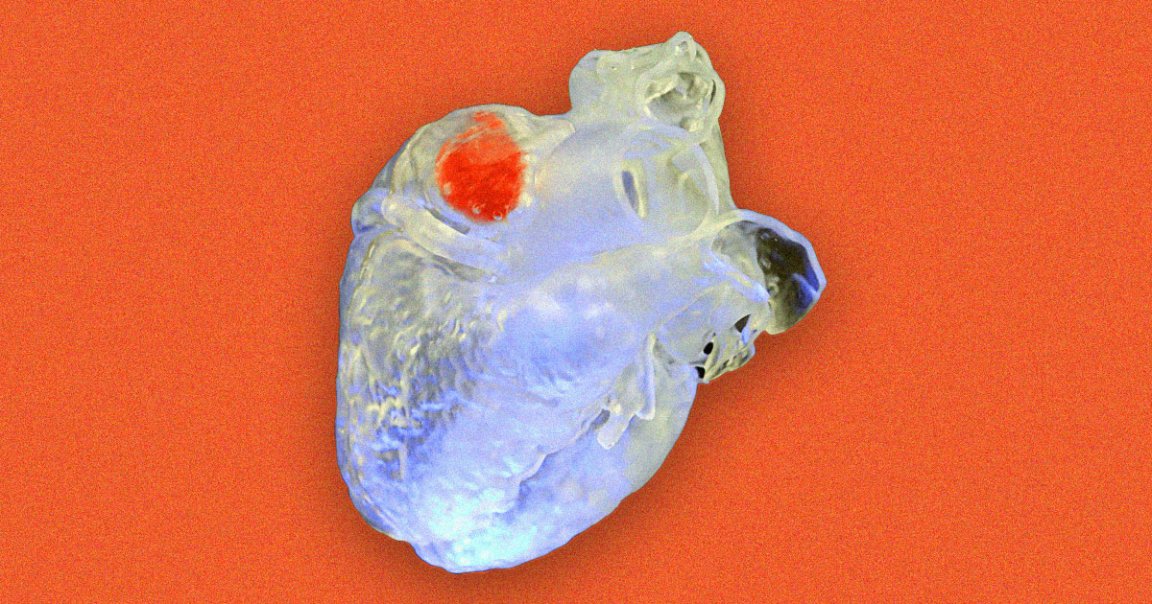
A team of researchers at Duke University and Harvard Medical School say they’ve developed a new way to 3D print inside the human body, by sending ultrasound waves at an injectable biocompatible ink.
As detailed in a new paper published in the journal Science, the team’s research builds on a previously developed photo-sensitive ink that hardens when exposed to beams of light, allowing scientists to slowly build up intricate biomedical structures.
But light can only penetrate a few millimeters into a given patient’s tissue, according to a statement about the research. Soundwaves, however, can penetrate much farther.
The new process, dubbed “deep-penetrating acoustic volumetric printing” (DVAP) could take the concept even further, allowing scientists to repair bones or even fix malfunctioning heart valves — while foregoing the need for invasive open surgery altogether.
“DVAP relies on the sono-thermal effect, which occurs when soundwaves are absorbed and increase the temperature to harden our ink,” said coauthor and Duke biomedical engineering associate professor Junjie Yao in the statement.
“Ultrasound waves can penetrate more than 100 times deeper than light while still spatially confined, so we can reach tissues, bones and organs with high spatial precision that haven’t been reachable with light-based printing methods,” Yao added.
Once the biocompatible “sono-ink” reaches the target area, a specially designed ultrasound probe can then harden it in place to create intricate structures.
“The ink itself is a viscous liquid, so it can be injected into a targeted area fairly easily, and as you move the ultrasound printing probe around, the materials in the ink will link together and harden,” said Y. Shrike Zhang, coauthor and associate bioengineer at Harvard’s Brigham and Women’s Hospital, in the statement.
“Once it’s done, you can remove any remaining ink that isn’t solidified via a syringe,” Zhang added.
Best of all, the scientists found ways to formulate new versions of their “sono-ink,” ranging from durable bone-like scaffolds to softer, more flexible heart valves.
In a series of three tests, the team grew a special structure to seal off a section inside a goat’s heart to stop blood from pooling inside the organ. The tissue hardened and safely bonded to the tissue without any complications. The team also addressed a bone defect inside a chicken leg.
The scientists also demonstrated that a special sono-ink hydrogel could slowly release a chemotherapy drug inside a liver.
But, as always, a lot more research has to be done before we can tell for certain if the same tech could work in humans.
“We’re still far from bringing this tool into the clinic, but these tests reaffirmed the potential of this technology,” said Zhang in the statement. “We’re very excited to see where it can go from here.”
More on 3D printing: 3D Printers Go Rogue, Start Printing While Owners Are Asleep